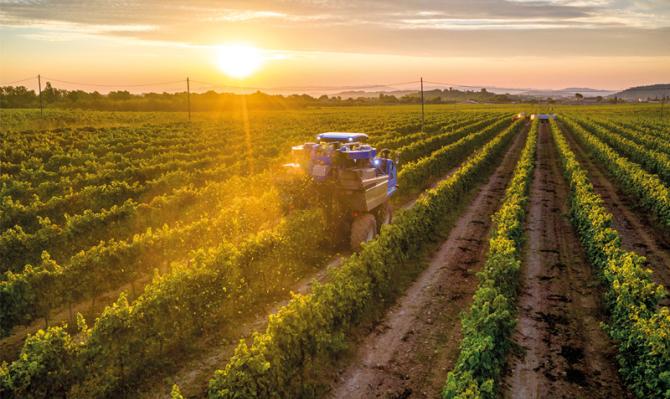Agrifood
Spain’s agrifood sector is making headway despite the adverse conditions
The Spanish agrifood sector is suffering the effects of the prolonged drought throughout Europe, which has been particularly severe in Spain, as well as the sharp rise in production costs.

- The Spanish agrifood sector is suffering the effects of the prolonged drought throughout Europe, which has been particularly severe in Spain, as well as the sharp rise in production costs. Both factors had a considerable impact on primary sector production in 2022, down by 8.8% in real terms. On the other hand, it’s important to note that the most adverse scenarios regarding the risk of shortages for Spanish agriculture that were predicted after Russia’s invasion of Ukraine have not actually materialised and agricultural commodity prices have corrected significantly on international markets. This has resulted in better figures in the first half of 2023; a trend of moderate growth that we expect to continue in the coming quarters.
- The fact that input prices are moderating on international markets (cereals, fertilisers and energy) should help to reduce costs in Spain’s agrifood sector and, ultimately, ease the inflationary pressures on food prices paid by the end consumer. This, together with a gradual recovery in the purchasing power lost by households in recent quarters, will help to boost household demand for food.
- One current concern is how the rising costs experienced by the agrifood sector may affect its competitiveness. Consequently, this report devotes an article to analysing the developments in Spanish agrifood production and exports compared with the other main agrifood players in Europe (France, Italy, Germany and the Netherlands), revealing that Spain has performed relatively well despite experiencing a sharper increase in costs and a longer drought than its peers.
- The long drought that’s ravaging much of the Iberian Peninsula is a manifestation of one of the great challenges facing the sector: how to combat and mitigate the effects of climate change. The sector needs to continue its transformation in order to overcome this challenge, improving its competitiveness and becoming more efficient in the use of productive resources. One important factor is the size of farms, since larger enterprises tend to be more efficient and competitive. Data from the agricultural census show a positive trend in this respect: in the last decade there has been an increase in the number of bigger farms, although the average Spanish farm is still small compared with other European countries that are more productive than Spain, where there is a greater proportion of large farms with a much higher production rate per farm.
- Finally, another relevant aspect to improve farm resilience is the diversification of sources of income. In this respect, rural tourism looks like being a good complementary activity to farming. In the last article of this report, we use CaixaBank’s anonymised internal data and employ big data analysis techniques to examine the trend in card payments made by both domestic and international tourists in rural destinations. The findings confirm that, after the pandemic, rural destinations have been a great alternative destination, leading to higher growth in tourism in the less urban regions of Spain than in its more traditional coastal destinations and cities.
